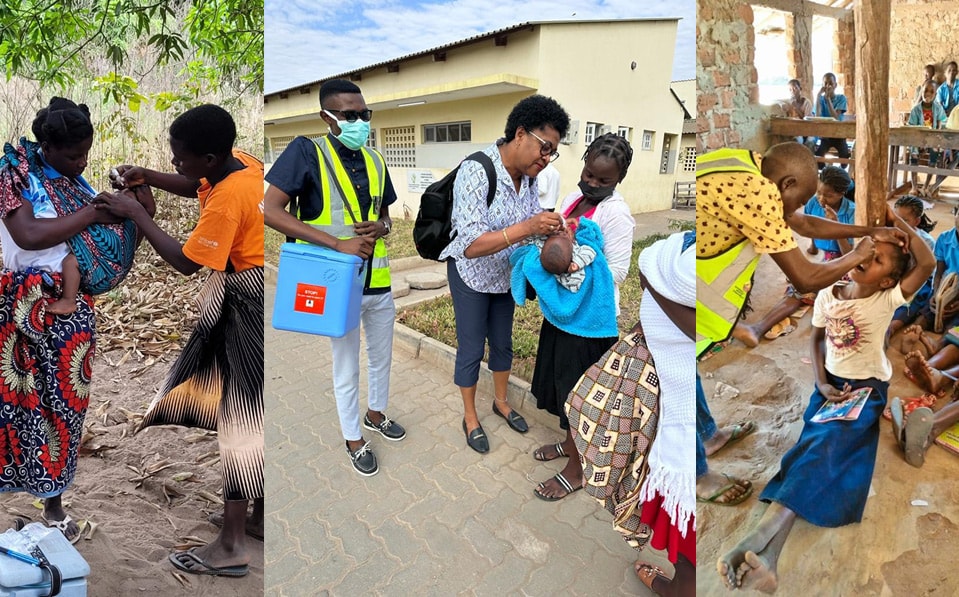World Polio Day 2023
Updated October 4, 2023
World Polio Day (October 24) provides an opportunity to highlight global efforts toward a polio-free world and honor the tireless contributions of those on the frontlines in the fight to eradicate polio from every corner of the globe. Through the Global Polio Eradication Initiative (GPEI), CDC works with partners to eradicate polio and end the suffering from this devastating disease.
It’s Time to Make Polio History
In 1988, poliovirus was present in 125 countries, paralyzing an estimated 1,000 children per day. That year, the Global Polio Eradication Initiative (GPEI) launched, with a goal of eradicating polio worldwide.
Over the past 35 years, GPEI has made remarkable progress towards this goal. Cases of wild poliovirus have decreased by more than 99% – from 350,000 cases per year to fewer than 10 annual cases of wild polio. The disease remains consistently present in just two countries – Afghanistan and Pakistan.
But challenges remain. As long as wild poliovirus continues to circulate in Afghanistan and Pakistan, all countries are at risk of wild poliovirus being imported. Outbreaks of poliovirus variants – which emerge when not enough children are vaccinated against polio – present an additional and pressing challenge in multiple countries.
On World Polio Day, CDC commemorates this progress and joins its GPEI partners in the call to overcome the barriers to Make Polio History once and for all.
Spread the Word!
Digital content from CDC and partners is available to spread the word about ending polio – on World Polio Day and beyond!
Digital Content from CDC
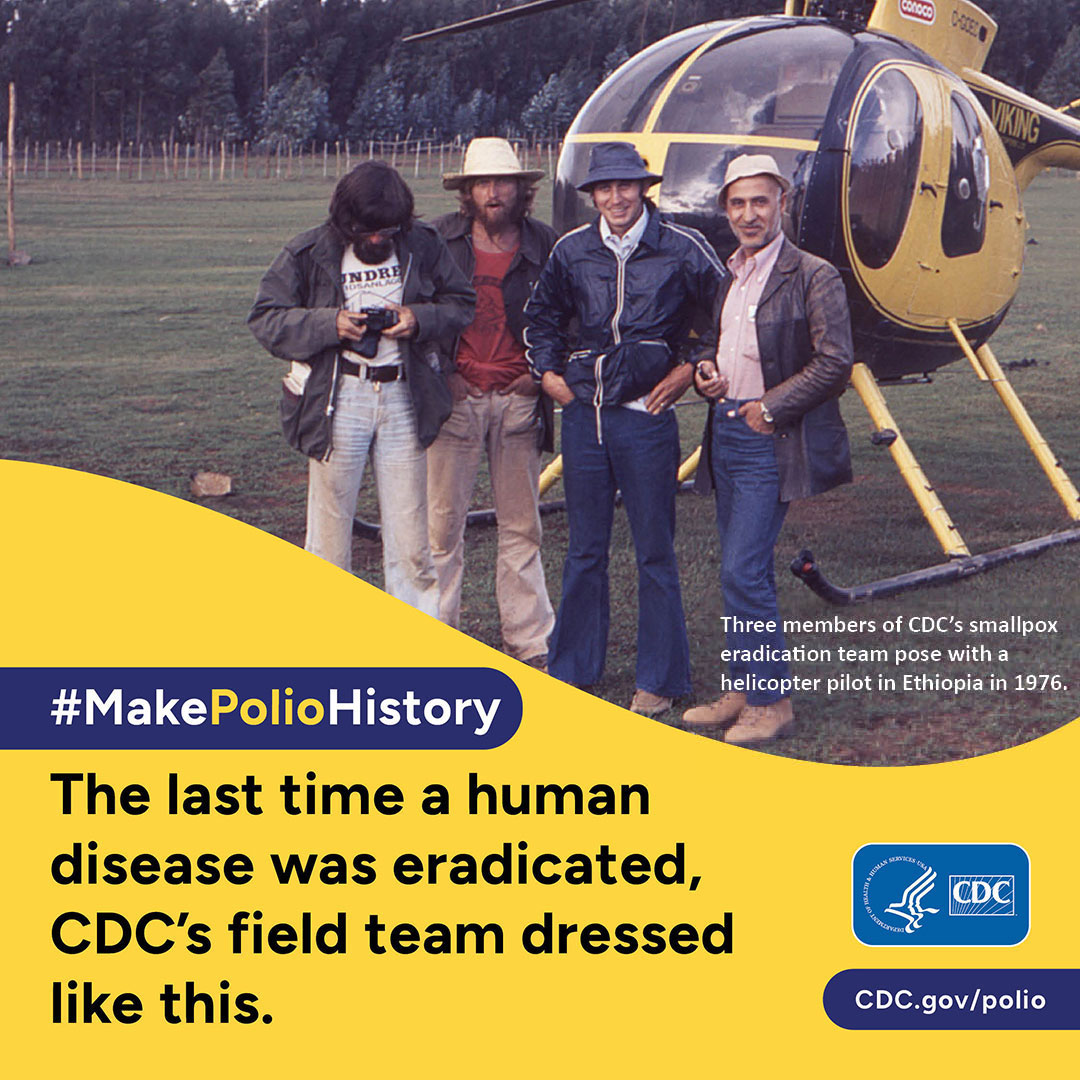
Sample post: Did you know only one human disease (smallpox) has been eradicated? We’re close to changing that count. #MakePolioHistory #WorldPolioDay
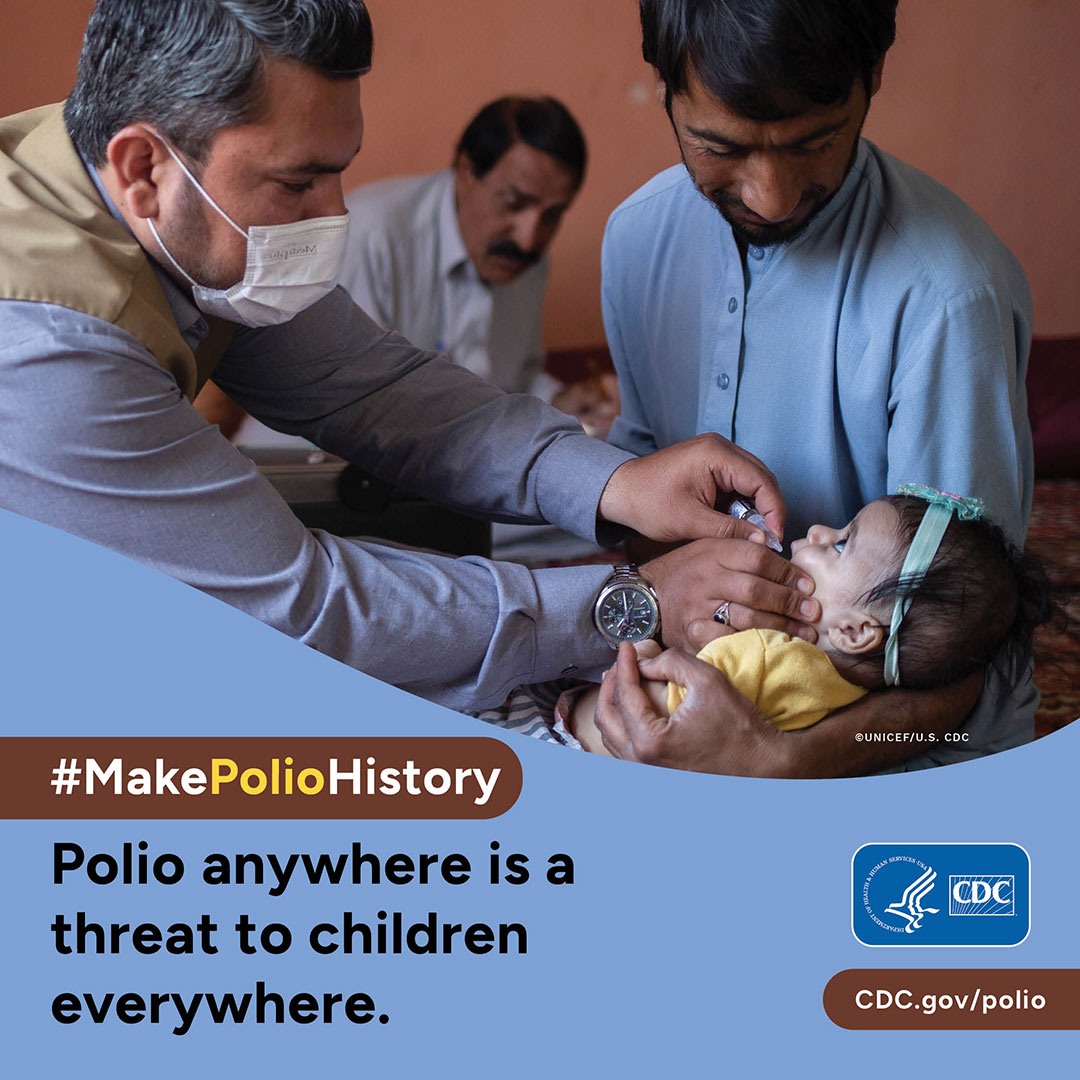
Sample post: To end polio, national health organizations worldwide must increase vaccination levels in all places, focusing where the virus is most likely to spread. #MakePolioHistory #WorldPolioDay
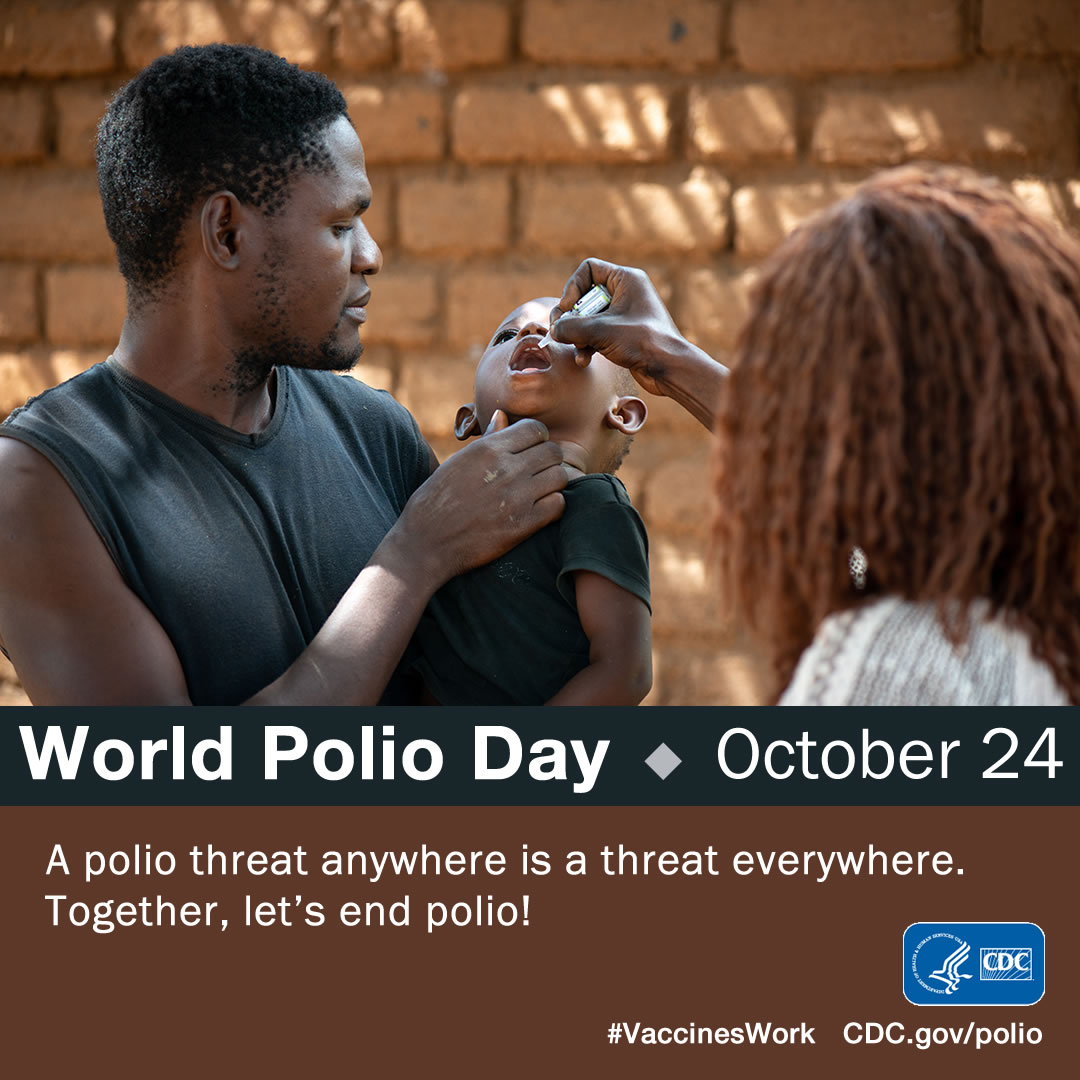
Sample post: October 24 is #WorldPolioDay! Together, we can #EndPolio.
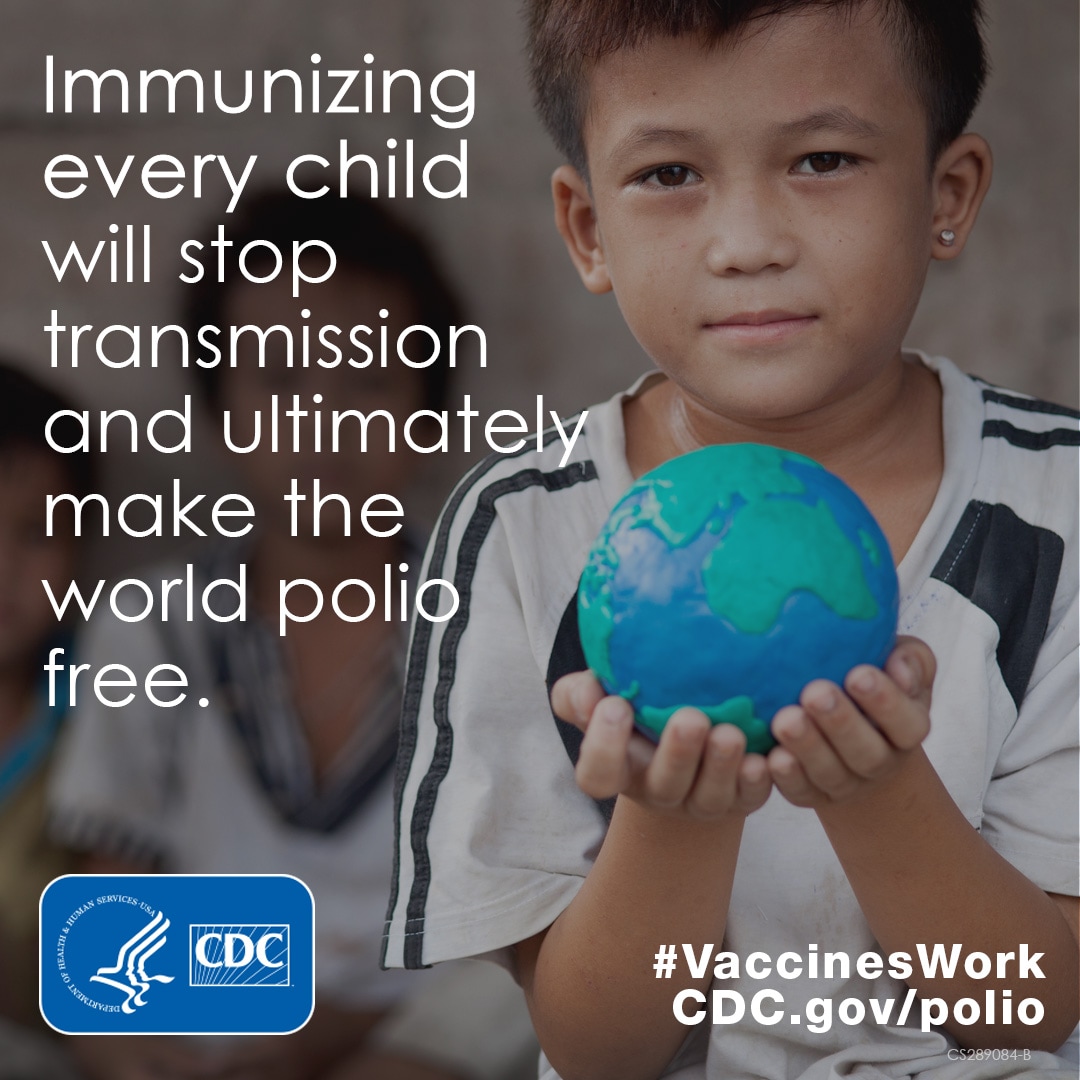
Sample post: On #WorldPolioDay and beyond, let’s recognize the tremendous progress and show support for support those working tirelessly to #EndPolio.
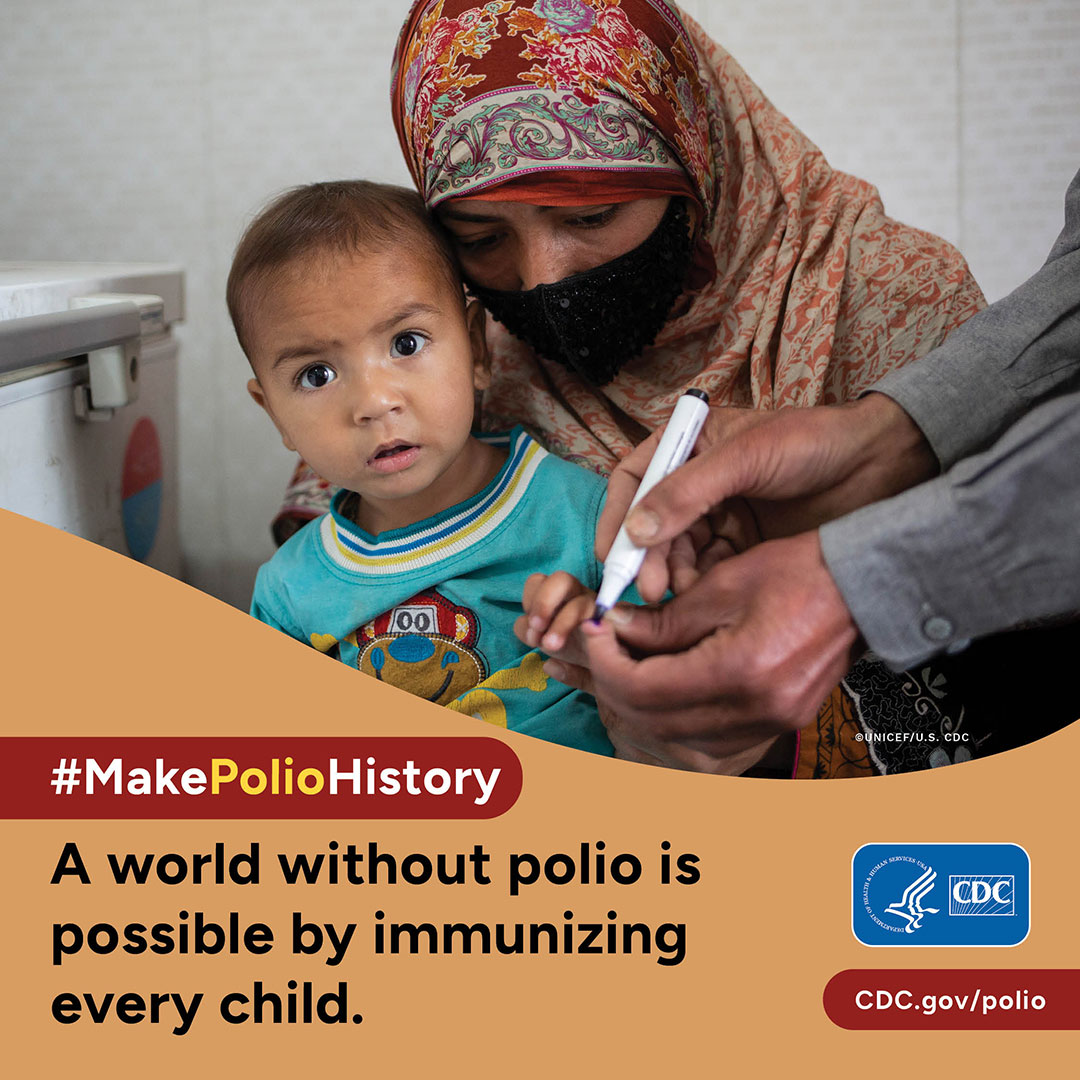
Sample post: 35 years ago, wild poliovirus was present in 125 countries – paralyzing 1,000+ children per day. Today, it’s only present in 2. Time to #MakePolioHistory. #WorldPolioDay
Partner Content
- World Polio Day Resources (Rotary International)
Use the tools on this webpage to share the message that we can and we will end polio for good. - Make Polio History (GPEI)
Hear from supporters around the world – including polio champions like Bill Nye and the Indigo Girls –who are raising their voices for polio eradication.
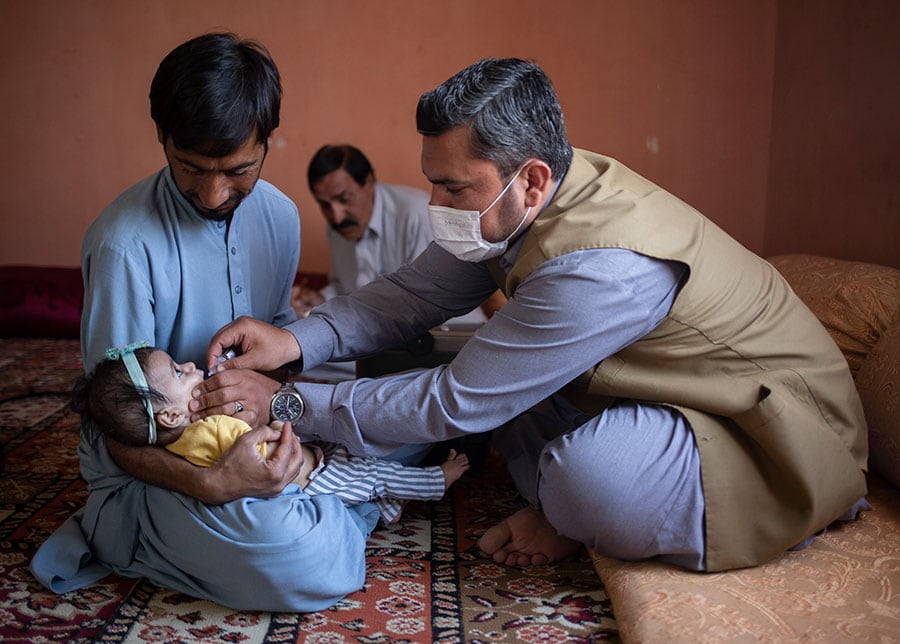
Yar Muhammad holds his daughter, Bibi, as she receives an oral polio vaccine at a community center in Quetta, Balochistan province, Pakistan. ©UNICEF/U.S. CDC/UNI409818/Bashir
CDC and WHO Science on Polio
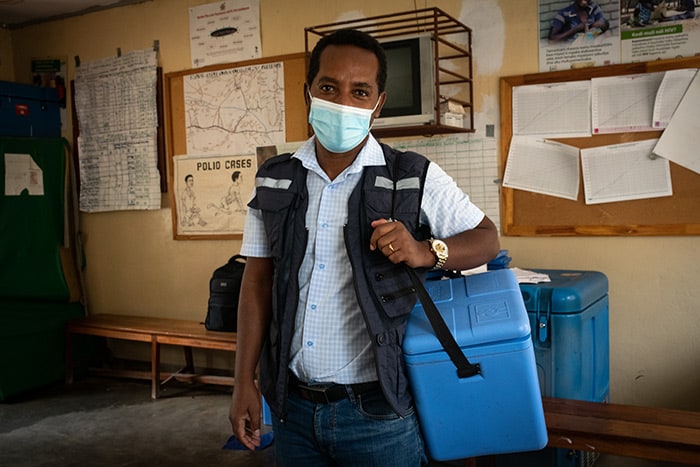
The STOP Program recruits, trains, and deploys a public health workforce that has been engaged in the global fight to eradicate polio for over 20 years.
Polio, or poliomyelitis, is a disabling and life-threatening disease caused by the poliovirus. The virus spreads from person to person and can infect a person’s spinal cord, causing paralysis (can’t move parts of the body).
